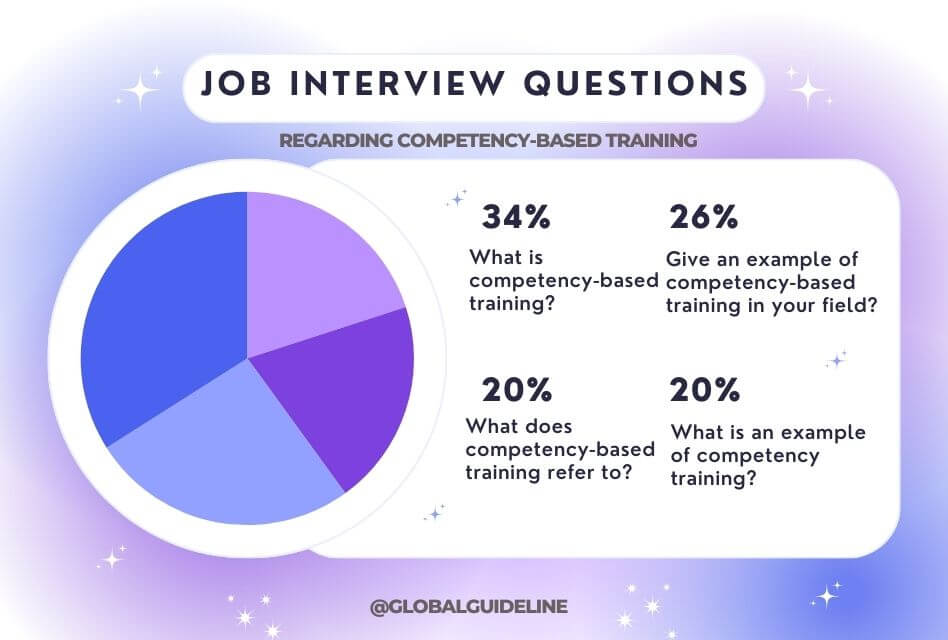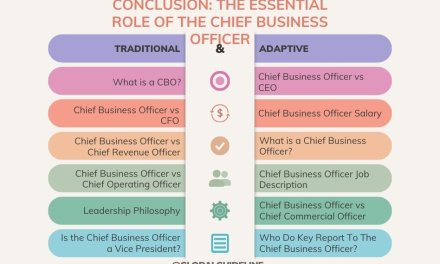Competency-based training is a very effective approach to education and professional development, well suited for equipping people with specific skills and knowledge for the proper performance of jobs. What is competency-based training, and why has it become so important in this fast-paced, increasingly skills-driven environment of today? To get you started or even to further enhance your knowledge, this article goes over some basics of competency-based training.
Table of Contents

Understanding Competency-Based Training
What is Competency-Based Training? Simply put, competency-based training refers to an approach that focuses on how learners acquire specific skills and demonstrate mastery in those skills before moving forward. Notably, competency-based training differs from other types of training models usually typified by time spent as the hallmark for learning, whereas CBT is adaptive, meaning one can move ahead at one’s pace after demonstrating the competencies required.
Important Features of Competency-Based Training:
- Learner-Centered: The training is tailored to the individual’s preferred learning style and pace.
- Skills-Focused: It focuses on developing specific skills rather than general knowledge.
- Assessment-Based: The progression is based on demonstration of mastery through assessment.
- Flexible Learning Pathways: The learner progresses when they establish proof of competency, so this reduces the time taken in learning by productivity.
What Does Competency-Based Training Mean?
Competency-based training is to ensure that learners acquire skills and knowledge essential in order to meet up the demands of their role. The training is competence-based and hence emphasized on acquiring specific competencies required to succeed in a specific job or profession. Learners are exposed to specialized skills, knowledge, and abilities necessary to accomplish jobs properly.
Focus of Competency-Based Training:
- Skill Acquisition: CBT centers mainly on helping learners to acquire skills for performing a job.
- Mastery Learning: Mastery of each competency is required before proceeding further.
- Practical Application: The training is always applied or hands-on, making it possible for the participants to apply the skills in the real world.
Benefits of a Competency-Based Training Program
Competency-based training programs have many advantages over traditional models of training. Being an acquisition of mastery in skills, competency-based programs ensure that learners are adequately prepared for roles.
Main benefits include the following:
- Personalized Learning: The training is made to meet the needs of each learner; thus, there is an allowance for progress at their own pace.
- Improved Skill Retention: Mastery emphasizes learners’ achievement of the skills they mastered.
- Efficiency: With mastery, learners can skip some material that they already know for a shorter time to take during the training.
- Job-Readiness: After learners have undergone CBT, they will have acquired the necessary skills for employment, thus efficiently doing their job.
Competency-Based Training in Various Industries
Competency-based training (CBT) forms part of a lot of various industries, each of which has its unique set of required competencies. Let’s discuss just a few significant areas where CBT is being applied.
Competency-Based Training in Aviation
Competency-based training in the aviation industry is fundamental to ensure safety and efficiency. A successful pilot, an effective air traffic controller, or an efficient maintenance engineer will have to demonstrate successful mastery in specific competencies prior to certification.
- Example: A pilot may be competency-based trained to handle emergency procedures, navigation, and communication skills. The focus is to ensure that the pilot can apply the skills in real life situations rather than passing a written examination.
Competency-Based Training in Education
Competency-based training is applied in the education sector to prepare teachers and administrators for the skills needed in support of student learning.
- Example: A teacher might be trained in CBT on classroom management, planning, and assessment. However, demonstrating the ability to put those skills into practice in the classroom would make an individual eligible for additional training.
7 Competencies across Which Learners Are Trained in Competency-Based Training
To be successful in competency-based training, learners have to possess various types of competencies. These are applicable across industries, and without them, career development cannot be achieved.
1. Communication Competence
The most important of any profession’s core competencies is effective communication. In competency-based training, it often becomes an important competency whose aim is the development of the learner’s ability to communicate information clearly and effectively.
- Importance: Whether it is aviation, education, or any other industry, effective communication becomes very important in projecting one’s message to colleagues, clients, and other stakeholders.
2. Problem-Solving Abilities
Problem-solving is another imperative skill that CBT programs teach. They are supposed to think critically and creatively to solve problems.
- Application: For example, pilots in aviation are required to assess and respond with their aircraft within dynamic aviation systems due to an equipment failure or a change in weather.
3. Technical Competency
Technical skills can be considered as a general area of competency-based training. The learner is expected to demonstrate the ability to use certain tools, technologies, or processes relevant to the job.
- Example: Training in the field of IT can take competency-based training if focused on the competence of mastering programming languages, software development tools, or cybersecurity practices.
4. Team Work and Collaboration
In some cases, effective functioning as part of a team is very necessary in most professions. Teamwork and collaboration competencies are common components of competency-based training activities.
- Focus: In education, teachers can undertake group work or collaborative teaching to develop their ability to work cooperatively with colleagues towards a common goal.
5. Flexibility and Versatility
There are currently numerous changes that take place in the workplace, and more currently, there is a growing demand to cope with the new conditions and challenges. Competency-based learning allows trainees to cope with dynamic environments.
- Relevance: Adaptation is the need of the hour to maintain safety and efficiency in industries such as aviation, keeping abreast of changes in regulations and evolving technologies.
6. Leadership and Management Abilities
Even though competency-based training programs are sometimes focused on the development of management abilities for future leaders, students have to demonstrate their ability to lead a team through effective decision-making and resource administration.
- Example: CBT Business program modules in strategic planning, decision-making, and resolving conflicts might ask students to use such knowledge in scenario case studies.
7. Continuous Learning and Improvement
Continuous learning is the key in one’s career. Competency-based training inspires more learners to pursue new development opportunities and refine one’s skills constantly.
- Objective: CBT promotes an attitude of continuous improvement, helping the learner constantly be on top of his profession and keep abreast of whatever fresh challenges are piled upon him.
Examples of Competency-Based Training
Competency-based training can be very diversified regarding both industry and skill type. As an illustration of this, a few examples of CBT application in different contexts are given below.
Example 1: Training in Healthcare
Competency-based training is the backbone of healthcare since it allows nurses, doctors, and other medical professionals to acquire the skills necessary to deliver quality healthcare services.
- Focus: Training may be related to skills, such as, monitoring the condition of patients, response to emergency, and usage of medical technology. The actual practice of the learner has to be assessed also.
Example 2: Corporate Training
Corporate training can utilize competency-based training in developing leadership and management competencies within the organization.
- Focus: A CBT program may encompass modules on project management, communication, and strategic planning, and the employees would be expected to apply such skills to real-world projects.
Role of Competency-Based Assessment
Competency-based training is not possible without competency-based assessment, which measures the learners’ progress and checks if the learners are competent enough to master the required skills.
Types of Competency-Based Assessment:
- Performance Assessments: The required skills of learners are demonstrated in real-world or simulated scenarios.
- Portfolios: The learner collects evidence of her skills and competencies, such as work samples or project reports.
- Exams and Quizzes: Not as often applied in CBT, nevertheless, when students should prove knowledge of important concepts and principles, exams are indispensable.

Job Interview Questions Regarding Competency-Based Training
Knowing about competency-based training can play to an advantage in preparing for job interviews. Here are some most common interview questions on the topic of CBT together with advice on how to answer them.
1. What is competency-based training?
Answer: It is competency-based training that helps learners achieve competencies through the acquisition and demonstration of specific skills and knowledge directly relevant to their jobs. Mastery of competencies rather than the number of hours spent learning are emphasized in such training.
2. Give an example of competency-based training in your field?
Answer: For example, competency-based training in health care might be a program that teaches nurses to apply a new medical device that can be used as shown above. The training then includes hands-on practice and assessments to ensure that the nurses are safe and effective at using the device.
3. What is the difference between competency-based training and traditional training?
Answer: Competency-based training is distinct from traditional training as it follows a learner-centered approach, focusing on mastering skills rather than hours spent in learning. Students learn at their own pace and advance only when they have demonstrated the respective competence.
Frequently Asked Questions (FAQs)
1. What does competency-based training refer to?
Competency-based training is an educational process where the learners are trained to acquire specific competencies and, before advancing, must be able to demonstrate mastery in those skills. It seeks to ensure that the learners acquire their required competencies in their jobs.
2. What is an example of competency training?
A good example is airline pilot training where, before getting certified, pilots must demonstrate mastery of emergency procedures, navigation, and communication skills through simula ted flights.
3. What are the 7 core competencies in CBC?
The seven competencies identified may include communication, problem-solving, technical skills, teamwork, adaptability, leadership, and continuous learning. These competencies are critical success factors in many different industries.
4. What is competency-based training and assessment?
Competency-based training and assessment is an approach whereby learners are assessed according to the demonstration of specific competencies. Assessment methods may be performance evaluation, portfolios, or tests.
5. What is the purpose of a competency-based training strategy?
A competency-based training strategy provides learning to develop most competencies that learners will require for their work and careers. It focuses on developing competencies, which automatically results in better job performance and career development.

Conclusion: Competency-Based Training Mastery
Competency-based training: it is really an innovative and effective approach to education and professional development. The skills and knowledge for which students are trained to be well-prepared for their roles, the abilities of learners to display their competencies in real-world applications, are guaranteed within competency-based training. Whether a student or educator or the professional him self, mastering the principles of competency-based training may make all the difference in one’s career prospects and indeed to one’s job performance.
The demand for qualified professionals is increasing day by day, but so are the prospects for attaining success through competency-based training, which would help equip and empower in all the tools and resources required to develop and demonstrate needed competencies in this competitive job market of today.
Related Posts:
4 Strategies for Services to Elevate Customer Experiences
7 Ways Performing Manufacturing Operations Boosts Supply Chain Success










